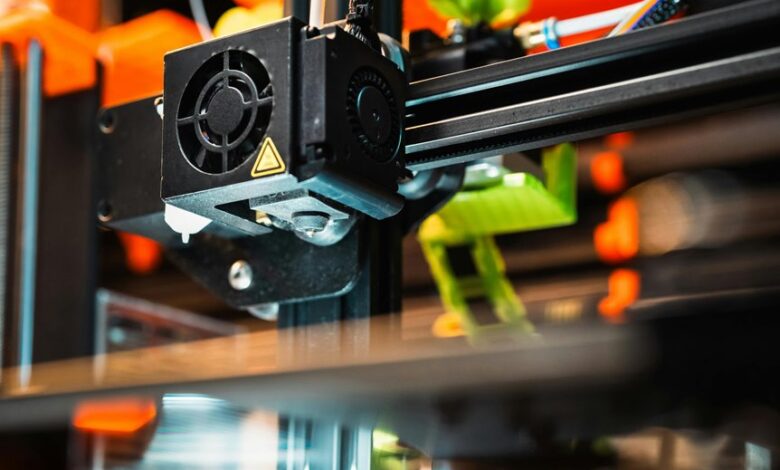
The integration of robotics into manufacturing and service industries is increasingly evident. Studies indicate that robotic automation can enhance production speed by up to 30% while improving quality control. In service sectors, automation streamlines processes and enhances customer engagement. However, the adoption of these technologies also presents challenges. Understanding the implications of this shift is essential for businesses aiming to remain competitive in a rapidly evolving landscape. What factors will influence the future trajectory of robotics in these sectors?
Advancements in Robotic Technology
As industries increasingly adopt automation, advancements in robotic technology have become pivotal in enhancing efficiency and productivity.
Robotic innovations, such as AI-driven algorithms and machine learning, are reshaping automation trends across sectors. These developments enable improved decision-making, real-time data analysis, and autonomous operations, fostering a landscape where businesses can thrive while maintaining flexibility and adaptability to meet evolving market demands.
Robotics in Manufacturing: Enhancing Efficiency and Precision
Robotics in manufacturing significantly enhances production speed, allowing companies to meet increasing market demands more efficiently.
Additionally, the integration of robotic systems has led to improved quality control, minimizing defects and ensuring consistent output.
These advancements contribute to cost reduction strategies, ultimately positioning manufacturers for greater competitiveness in the global market.
Increased Production Speed
While manufacturing processes traditionally relied on human labor, the integration of robotic systems has significantly transformed production dynamics.
Automation benefits include a marked increase in production efficiency, with robotic systems capable of operating at higher speeds than human workers.
This acceleration not only shortens production cycles but also enhances output consistency, allowing manufacturers to meet growing market demands with agility and precision.
Improved Quality Control
The integration of robotic systems not only accelerates production speed but also significantly enhances quality control in manufacturing processes.
Through advanced robotic inspections, manufacturers achieve greater accuracy and consistency, leading to improved quality assurance.
Data shows that automated systems reduce human error and ensure adherence to rigorous standards, fostering a production environment where precision prevails.
Ultimately, this satisfies consumer expectations and enhances product reliability.
Cost Reduction Strategies
Significant cost reduction can be achieved through the strategic implementation of robotic systems within manufacturing operations.
By leveraging automation benefits, companies enhance operational efficiency, reduce labor costs, and minimize waste.
Data reveals that businesses adopting robotics experience up to a 30% decrease in production expenses.
This transition not only streamlines processes but also empowers organizations to allocate resources more effectively, fostering innovation and growth.
The Impact of Robotics on Service Industries
Robotics has increasingly transformed service industries, enhancing efficiency and customer satisfaction across various sectors.
Through service automation, companies streamline operations, reduce response times, and improve accuracy.
Data indicates that robotic systems significantly enhance customer interaction quality, allowing for personalized experiences.
As automation continues to evolve, service industries will likely see further advancements, fostering a more responsive and engaging environment for consumers.
Collaborative Robots: Bridging the Gap Between Humans and Machines
While traditional industrial robots often operate in isolation, collaborative robots, or cobots, have emerged as a solution designed to work alongside human workers in shared environments.
These systems enhance human-robot collaboration, improving productivity and efficiency. Adhering to stringent safety standards, cobots ensure a secure work atmosphere, allowing human operatives to leverage robotic capabilities without compromising safety.
Thus, fostering a more harmonious integration of technology.
Challenges and Considerations in Robotics Adoption
Robotics adoption in manufacturing and service industries presents several challenges that organizations must strategically address.
High initial investment costs can deter many businesses from implementing robotic solutions, while existing workforce skill gaps may hinder effective integration.
Additionally, ensuring compatibility with current systems remains a critical consideration that can impact the overall success of robotics implementation.
High Initial Investment Costs
Although the potential benefits of robotics in manufacturing and service industries are substantial, the high initial investment costs present a significant barrier to widespread adoption.
Initial expenses can be daunting, often requiring extensive financial planning and capital allocation. Companies must carefully assess their financial capacity and long-term return on investment, balancing the upfront costs against projected efficiency gains and productivity improvements.
Workforce Skill Gaps
As industries increasingly adopt robotics, a critical challenge emerges in the form of workforce skill gaps that can hinder effective implementation.
Skills assessments reveal significant discrepancies between current employee capabilities and the demands of advanced robotic systems.
To address this issue, tailored training programs are essential, enabling workers to acquire necessary competencies and fostering a more adaptable workforce prepared for the evolving technological landscape.
Integration With Existing Systems
The integration of robotics into manufacturing and service industries presents a complex landscape of challenges and considerations, particularly when aligning new technologies with existing systems.
System compatibility challenges often arise, necessitating the development of seamless integration strategies. Organizations must assess their current infrastructure and invest in adaptive solutions to ensure efficient collaboration between robotic systems and legacy processes, ultimately enhancing operational effectiveness.
The Future of Work: Embracing Robotics in Business
While many industries are undergoing transformative changes driven by technological advancements, the integration of robotics into business operations is poised to redefine the future of work.
As companies adopt automation, the future workforce will require enhanced robotics training to thrive.
This shift will necessitate new skill sets, fostering a more adaptable labor market that embraces innovation and efficiency while promoting individual autonomy and creativity.
Conclusion
In conclusion, the integration of robotics in manufacturing and service industries signifies a pivotal evolution in operational efficiency and precision. As robots accelerate production lines and enhance customer interactions, they redefine workforce dynamics and productivity. Collaborative robots foster synergy between human and machine, while the challenges of adoption prompt careful consideration. Looking ahead, the future of work will be characterized by innovation and adaptation, where robotics not only meet market demands but also reshape the essence of industry performance.
